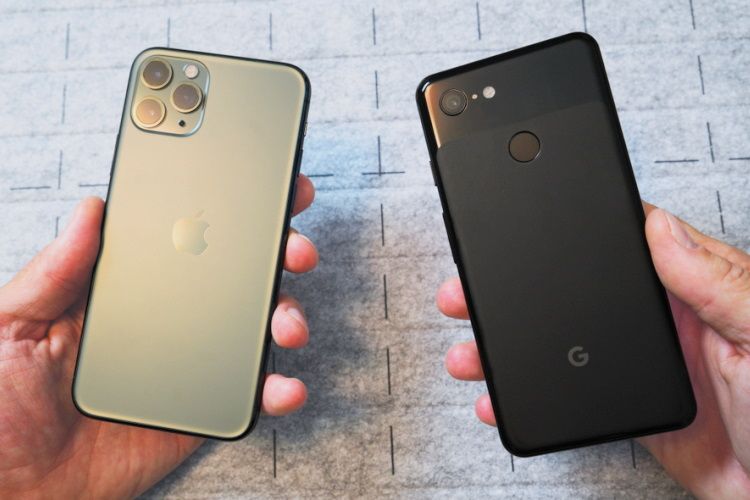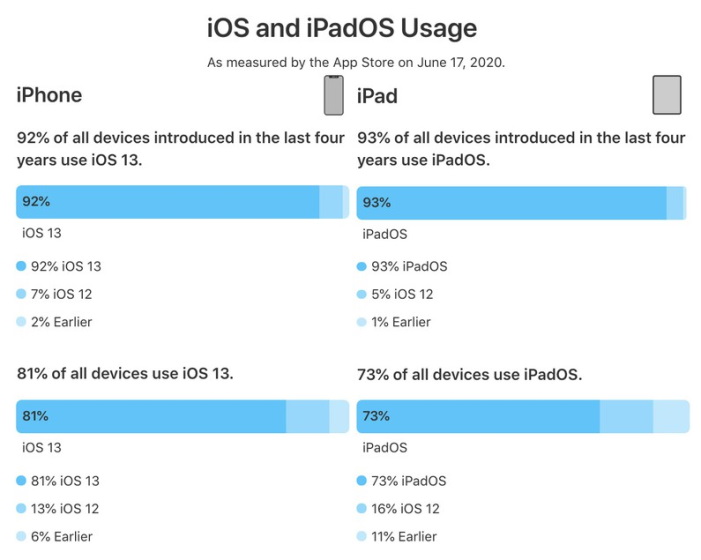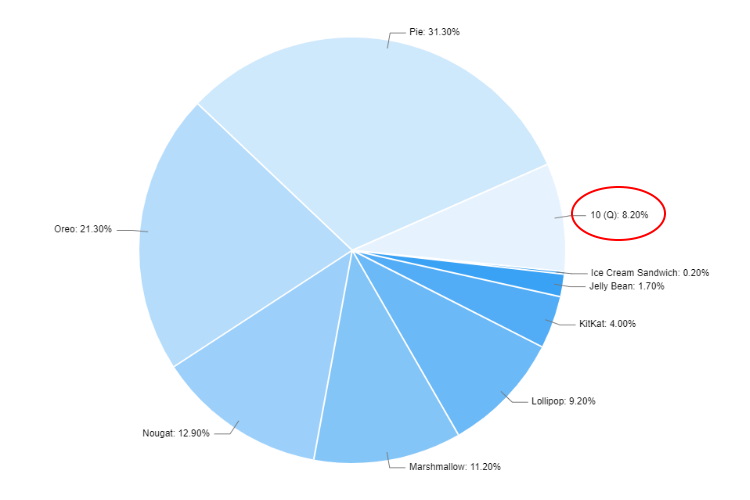
We're about 48 hours away from Apple taking the stage at the Steve Jobs Theater to unveil iOS 14, its next-generation mobile operating system, at WWDC 2020. Rumors also suggest that iOS will be renamed iPhone OS at the event.
In preparation for this event, Apple today released the distribution figures for iOS 13. It's as expected and ready to take another hit at the reach of the latest Android release.
iOS 13 is already installed on more than 92% of iPhones, Android 10 is still below 10%
Apple has updated its developer website to give us an idea about how many users are running the latest version of iOS: iOS 13. The answer is 92% of all iPhones that were sold in the last four years. This includes everything from the first-generation iPhone SE (released in 2016) to the iPhone 11 series (released last year).
If this wasn't already noteworthy, only 7% of iPhones run the previous generation iOS 12. This means that 99% of iPhones (models from the last four years) are running the latest two software versions. The number only drops to 94% if we consider all iPhone models. This includes 81% of devices running iOS 13 and 13% running iOS 12 respectively.
The numbers aren't much different for iPadOS, which was introduced last year. You can check the distribution numbers for both the software (updated June 17) below.
Now, we all know that the Apple product ecosystem is a walled garden. Everything from a software feature to internal hardware components, everything is managed and optimized by Apple. So this makes it simpler for the company to maintain a standard and make its mobile operating system available for more devices and fast. You don't have to rely on a third-party OEM, as is the case with Android.

Yes, let's talk about Android distribution numbers. I think we are all aware of the sad state of Android updates and fragmentation. Google had stopped sharing distribution numbers for its mobile operating system months ago, making it impossible for us to track the market penetration of the latest version of Android. Now, however, it has made distribution numbers available within Android Studio, its app development kit.
And the numbers still don't look good. The distribution data shown in the pie chart below is from April 2020 compared to June figures for iOS. Android 10 has been installed on only 8.2% of the total number of Android phones on the market. However, it shows that Android 9 Pie now works with more than 31% of phones, which is good.
So, if someone were to consider only the latest two versions of Android and iOS, then the latter has an almost double advantage over the former. More than 94% of iPhones are running iOS 13 and iOS 12, while only 40% of devices are running Android 9 and 10. Well, the even more disappointing fact is that Android 5 Lollipop, released in 2014, still has more than 9% market share.

Android is open source, we should all know that by now, and phone manufacturers are free to tweak and modify the software as per their needs. This caused a strong increase in custom ROMs, such as Xiaomi's MIUI, Samsung's OneUI or Oppo's ColorOS in recent years. It has given users more options, but it has also contributed to the fragmentation of the Android ecosystem.
The first stable version of Android is usually scheduled for September, coming only to Google Pixel phones at first. OEMs then begin testing and releasing their custom builds of Android 10 in the following months, with stable builds reaching users three months or later, in December. Google is working to fix fragmentation. I had introduced Project Treble with Android 9 Pie to address this issue, but it seems to be moving slowly and still hasn't fixed the issue.
What is the conclusion here? Apple's walled garden allows them deliver the same software experience on all your devices. Your iPhone could have been released yesterday or three years ago, but it would still work with the latest iOS update. Android, on the other hand, is fragmented and will struggle to push the latest update to more devices due to a mediator (third-party OEM).
But, the open nature of Android is also a positive for users, including us. Open development around Android sees the addition of some exciting features and tweaks to the software. I would choose a software experience that I can adjust as needed in a walled garden. iOS, however, takes a lead over Android in terms of distribution figures.